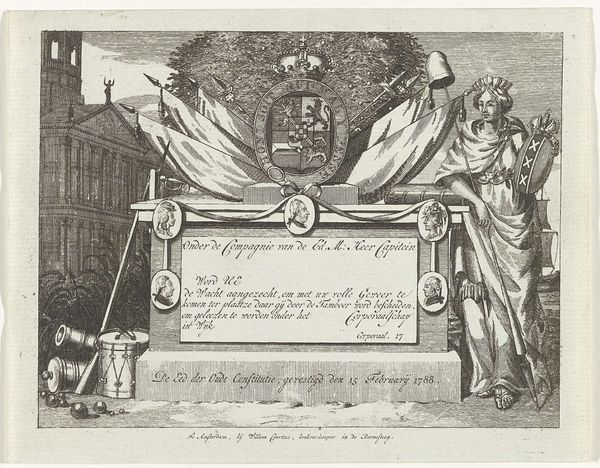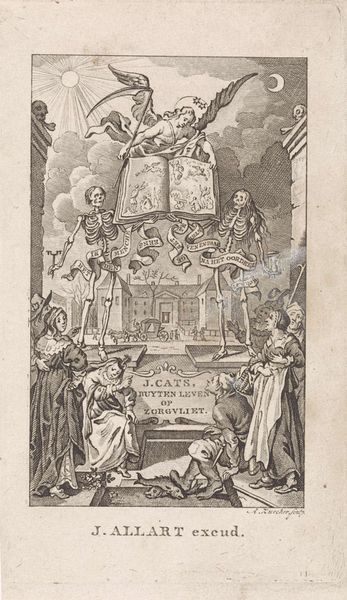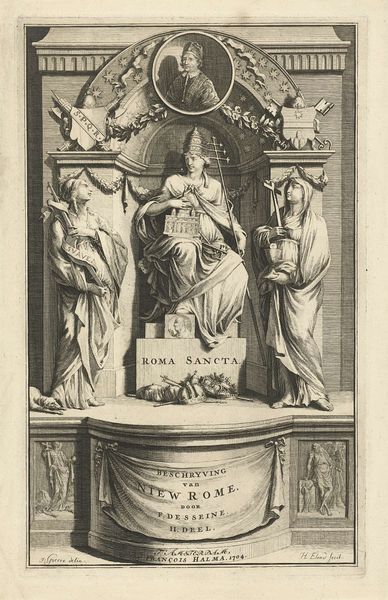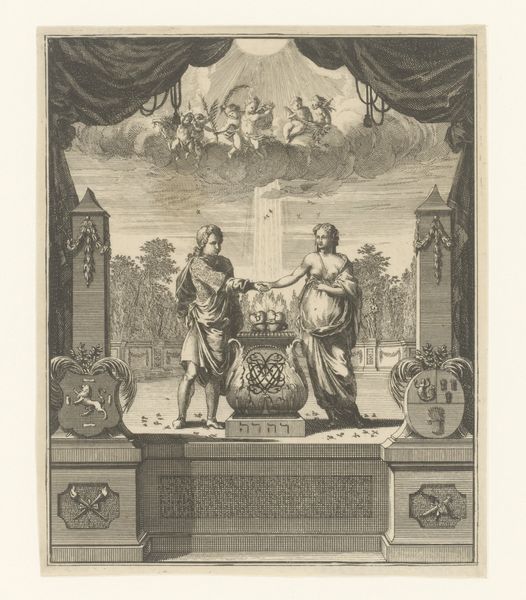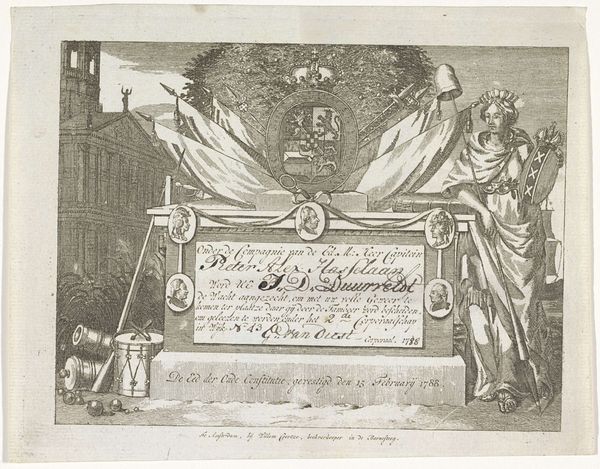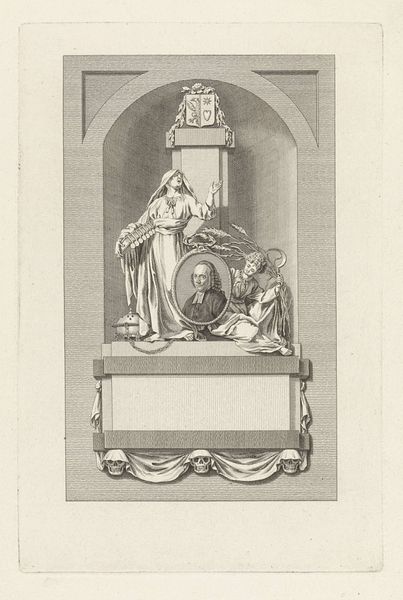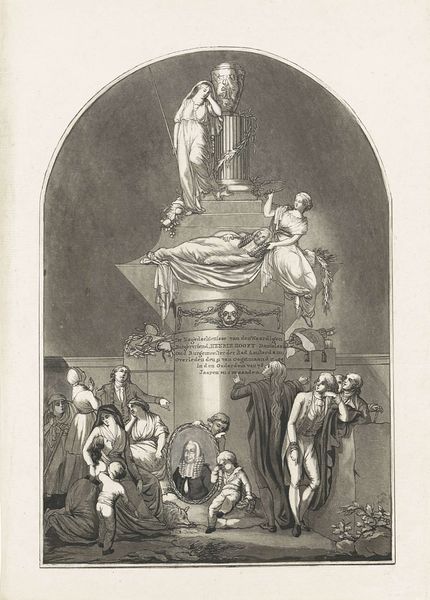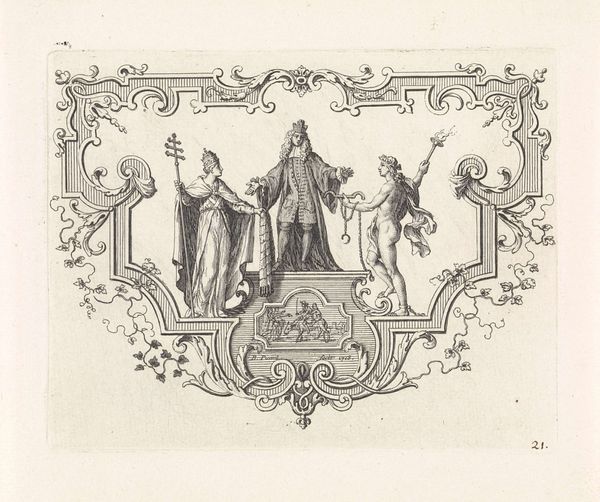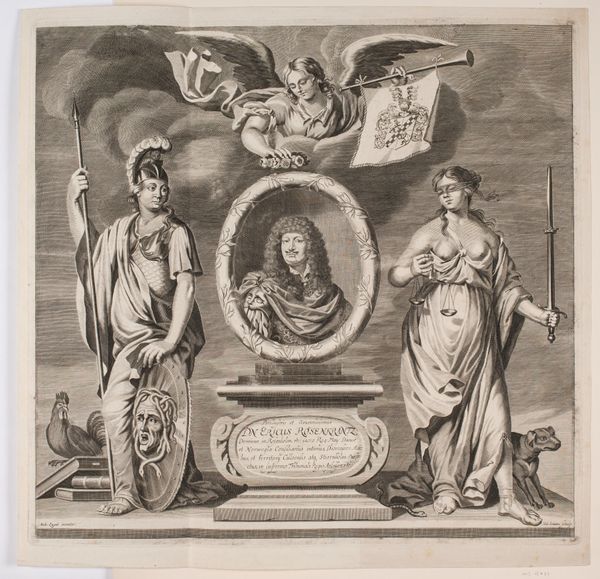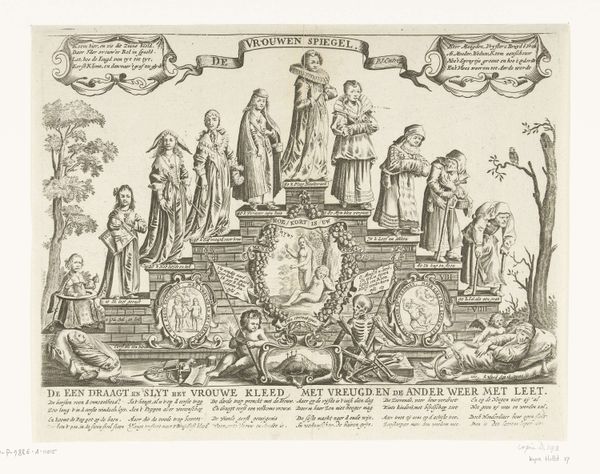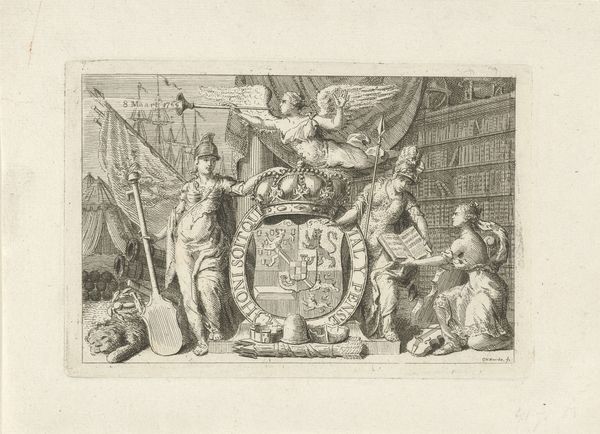
print, engraving
#
allegory
#
baroque
# print
#
pen sketch
#
pencil sketch
#
figuration
#
pen-ink sketch
#
line
#
history-painting
#
engraving
Dimensions: height 99 mm, width 147 mm
Copyright: Rijks Museum: Open Domain
Editor: This print, “Allegory of Marital Deceit,” was created in 1641 by Crispijn van de Passe the Younger. The engraving feels like a stage set, and the figures almost like actors. What sort of story do you think it’s telling? Curator: The beauty of allegory is that it speaks to the collective consciousness. Note the symbols: a broken chalice, a cracked horseshoe. These aren't just decorative elements, but cultural shorthand. They resonate with anxieties surrounding broken vows, lost fortunes, and the instability of marriage. What feelings do those symbols evoke in you? Editor: I see the broken chalice representing shattered unity and the broken horseshoe symbolizing bad luck. But why place a Cupid figure atop everything? It’s so contradictory! Curator: Cupid offers a complex layer. Often viewed as the innocent instigator of love, here, he presides over its perversion. Observe his posture and the objects surrounding him; they don't convey innocence. Is it possible that Van de Passe intended to portray not love, but the manipulative facade of it? What do you see in the expressions of the man and woman flanking the central structure? Editor: The man looks sly, concealing something, while the woman seems detached, almost resigned. The city in the background… everything seems distant, devoid of connection. Curator: Precisely! Van de Passe masterfully utilizes familiar visual language to dissect a social ill. The print becomes a mirror reflecting the viewers’ own understanding of commitment, trust, and societal expectations. Do you see a shift in your initial impression? Editor: Definitely! It’s not just a historical artifact but a timeless commentary on the human condition. This piece makes you reflect on the power of visual symbols and their endurance. Curator: Agreed. By recognizing and questioning these visual cues, we not only understand the artwork better, but ourselves as well.
Comments
No comments
Be the first to comment and join the conversation on the ultimate creative platform.
